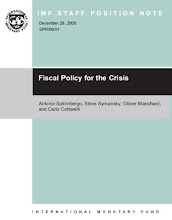R-ADAG has set its eyes on acquiring the life insurance business of AIG in Asia (ex-India); this comes close after Group Company Reliance Money acquiring 15% stake in Hong Kong Mercantile Exchange, which came on the back of a partnership with local firm Goldride Securities, for distributing financial products and services. Rumors have it that Citibank, acting on behalf of AIA, has approached ADAG to buy out AIA. ADAG is likely to be one of several bidders looking to buy these AIG businesses The AIG deal if goes through, could well be the second-largest overseas buyout by an Indian firm pegged at an asking price of around $10 bn, ADAG however is valuing between $5-6 bn. This deal would also make Reliance the largest life insurer in South-East Asia.
AIG has been going through tough times in recent times, last month, the US nationalised AIG, which was on the brink of collapse by acquiring 80% in the insurance giant with an $85 bn loan and restructured its top management. AIG, which had assets in excess of $1 trillion in 2007, has been looking to sell parts of its businesses and assets and focus on the core general insurance business. Globally, AIG operates majorly as AIA while in some markets like Australia and New Zealand, it functions as AIG. AIG’s move to sell AIA is at variance with its earlier statement to retain a continuing ownership interest in its foreign life insurance operations. Life insurance and retirement services business is the largest revenue generator for AIG. Out of the total revenues of $110 b in 2007, life insurance generated $53.6 bon and general insurance $51.7 bn. Asset management and other financial services are comparatively smaller business areas of AIG globally.
Meanwhile R-ADAG already has a life insurance company venture in India, viz Reliance Life Insurance. It is an associate company of Reliance Capital, the flagship financial services firm of the group, which has interests in asset management, stock broking, insurance, proprietary investments, private equity and other activities in financial services. In India, AIG has a 24:76 life insurance JV. This business is unlikely to be part of the proposed deal with Reliance-ADAG, as the Tatas may have a right of first refusal in any sale by AIG.
AIG has been going through tough times in recent times, last month, the US nationalised AIG, which was on the brink of collapse by acquiring 80% in the insurance giant with an $85 bn loan and restructured its top management. AIG, which had assets in excess of $1 trillion in 2007, has been looking to sell parts of its businesses and assets and focus on the core general insurance business. Globally, AIG operates majorly as AIA while in some markets like Australia and New Zealand, it functions as AIG. AIG’s move to sell AIA is at variance with its earlier statement to retain a continuing ownership interest in its foreign life insurance operations. Life insurance and retirement services business is the largest revenue generator for AIG. Out of the total revenues of $110 b in 2007, life insurance generated $53.6 bon and general insurance $51.7 bn. Asset management and other financial services are comparatively smaller business areas of AIG globally.
Meanwhile R-ADAG already has a life insurance company venture in India, viz Reliance Life Insurance. It is an associate company of Reliance Capital, the flagship financial services firm of the group, which has interests in asset management, stock broking, insurance, proprietary investments, private equity and other activities in financial services. In India, AIG has a 24:76 life insurance JV. This business is unlikely to be part of the proposed deal with Reliance-ADAG, as the Tatas may have a right of first refusal in any sale by AIG.




